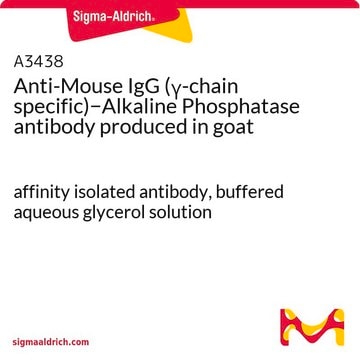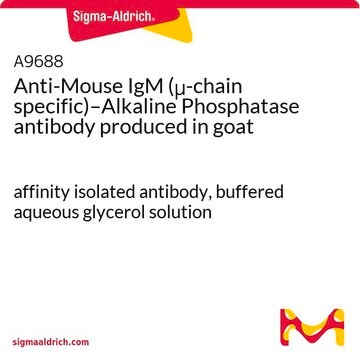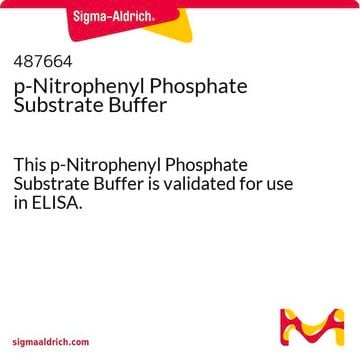N3254
4-Nitrophenyl phosphate di(tris) salt
phosphatase substrate, ≥97% (enzymatic), powder
Synonym(s):
4-Nitrophenyl phosphate bis(tris) salt
About This Item
Recommended Products
product name
4-Nitrophenyl phosphate di(tris) salt, phosphatase substrate
Assay
≥97% (enzymatic)
form
powder
solubility
water: 50 mg/mL, clear, colorless to light yellow
storage temp.
−20°C
SMILES string
NC(CO)(CO)CO.NC(CO)(CO)CO.OP(O)(=O)Oc1ccc(cc1)[N+]([O-])=O
InChI
1S/C6H6NO6P.2C4H11NO3/c8-7(9)5-1-3-6(4-2-5)13-14(10,11)12;2*5-4(1-6,2-7)3-8/h1-4H,(H2,10,11,12);2*6-8H,1-3,5H2
InChI key
XXAXKCWOTRABOW-UHFFFAOYSA-N
Looking for similar products? Visit Product Comparison Guide
Related Categories
Application
- as a substrate to quantify tartrate-resistant acid phosphatase (TRAP) activity in cell lysates
- to determine phosphatase activity using native polyacrylamide gel electrophoresis (PAGE)
- for alkaline phosphatase in enzyme-linked immunosorbent assay (ELISA)
Biochem/physiol Actions
Storage Class Code
11 - Combustible Solids
WGK
WGK 3
Flash Point(F)
Not applicable
Flash Point(C)
Not applicable
Personal Protective Equipment
Certificates of Analysis (COA)
Search for Certificates of Analysis (COA) by entering the products Lot/Batch Number. Lot and Batch Numbers can be found on a product’s label following the words ‘Lot’ or ‘Batch’.
Already Own This Product?
Find documentation for the products that you have recently purchased in the Document Library.
Customers Also Viewed
Articles
NBT-BCIP substrate system aids in western blotting and immunohistological staining, producing a blue-purple insoluble end product.
NBT-BCIP substrate system aids in western blotting and immunohistological staining, producing a blue-purple insoluble end product.
NBT-BCIP substrate system aids in western blotting and immunohistological staining, producing a blue-purple insoluble end product.
NBT-BCIP substrate system aids in western blotting and immunohistological staining, producing a blue-purple insoluble end product.
Our team of scientists has experience in all areas of research including Life Science, Material Science, Chemical Synthesis, Chromatography, Analytical and many others.
Contact Technical Service












